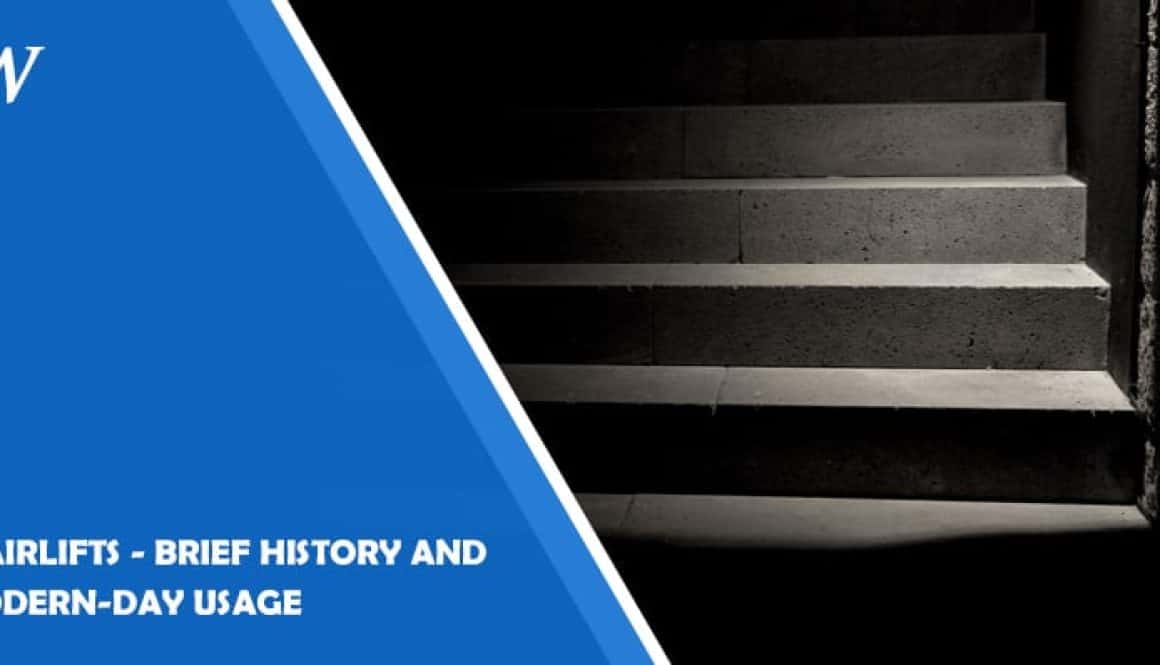Stairlifts – Brief history and modern-day usage
Stairlifts, also known as stairlifts or chairlifts, have a history that dates back several centuries. The concept of assisting people with mobility challenges in traversing stairs has evolved over time, with various innovations contributing to the modern stair lift we know today.
Today, stair lifts are widely available and play a crucial role in improving the quality of life for individuals with mobility challenges. The aging population and growing awareness of accessibility have contributed to an increased demand for stair lifts, leading to ongoing advancements in technology.

Here’s a brief overview of the history of stair lifts:
Early Inventions (17th to 19th centuries)
The earliest known concept of a stair lift can be traced back to the 17th century, where it is believed that King Henry VIII of England used a block and tackle system to be moved up and down stairs due to his weight-related health issues. However, this was more of a makeshift solution and was not widely adopted.
In the 19th century, some early prototypes of stair lifts were developed, including a steam-powered chairlift built in the early 1800s for King George IV of the United Kingdom at Windsor Castle. Despite these advancements, stair lifts were not yet commercially available, and the technology was limited.
- C. Crispen’s Invention (1920s)
The first commercially successful stair lift was invented by C.C. Crispen, an entrepreneur from Pennsylvania, United States, in the 1920s. Crispen developed a motorised chair that could climb stairs along a rail track. The track was typically mounted on the stair treads or wall, and the chair was operated using a motor-powered mechanism. The invention gained popularity among those with mobility issues, especially the elderly and people with disabilities.
Further Innovations (20th Century)
Throughout the 20th century, stair lift technology continued to improve. In the 1940s and 1950s, some versions were designed for outdoor use, expanding their functionality and accessibility. The introduction of more reliable electric motors and better track designs made stairlifts safer and more efficient.
Modern Stair Lifts
In recent decades, stair lift designs have become even more advanced, incorporating features like swivelling seats, safety sensors, remote controls, and foldable designs to save space when not in use. These innovations have made stair lifts more user-friendly, comfortable, and customisable to fit various types of staircases.
Stair lifts come in various types and configurations to accommodate different staircases and user needs. Here are some of the most common types of stair lifts:
Straight Stair Lifts: Straight stair lifts are designed for staircases that have a simple, uninterrupted, and linear path without any curves or turns. They are the most common type of stair lift and typically consist of a chair or platform that moves along a straight rail mounted on the staircase’s steps or wall.
Curved Stair Lifts: Curved stair lifts are custom-made to fit staircases with curves, angles, or intermediate landings. A curved rail is built to match the exact shape of the staircase, allowing the chair or platform to smoothly navigate the turns and changes in direction.
Outdoor Stair Lifts: Outdoor stair lifts are specifically designed to withstand the elements and operate in outdoor environments. They are constructed with weather-resistant materials, such as stainless steel and durable upholstery, to ensure longevity and performance in various weather conditions.
Perpendicular Stair Lifts: Perpendicular stair lifts, also known as through-floor lifts or vertical platform lifts, are installed to move vertically between floors rather than following the staircase’s path. They are suitable for individuals who cannot use stairs and need to move between different levels within their homes.
Compact Stair Lifts: Compact stair lifts are designed for narrow staircases or staircases with limited space. They often feature foldable seats, footrests, and armrests to maximise space when the lift is not in use.
Wheelchair Platform Lifts: Wheelchair platform lifts, also known as wheelchair stair lifts, are designed to transport individuals in wheelchairs between different levels. These lifts typically have a platform large enough to accommodate a wheelchair and a user.
Standing Stair Lifts: Standing stair lifts, also called perch stair lifts, are designed for users who have difficulty bending their knees or sitting for extended periods. These lifts allow the user to stand or perch on a small platform during transportation.
Heavy-Duty Stair Lifts: Heavy-duty stair lifts are specifically designed to accommodate users with higher weight capacities, providing a safe and reliable solution for larger individuals.
Seated Outdoor Stair Lifts: Seated outdoor stair lifts are similar to standard outdoor stair lifts, but they come with a seat for added comfort during transportation.
Portable Stair Lifts: Portable stair lifts are temporary or mobile devices that can be attached to stairs when needed, making them ideal for situations where a permanent installation is not feasible.
The choice of the appropriate stair lift depends on the specific staircase layout, the user’s mobility requirements, and any other unique factors involved. Professional assessment and installation are essential to ensure the stair lift meets the user’s needs and operates safely and reliably.
As technology continues to progress, it is likely that stair lift designs will become even more sophisticated and efficient in the future, further enhancing mobility and independence for those who need them.

Ryan is a professional copywriter from Ryan’s Copywriting. He has a passion for writing and sharing information.
